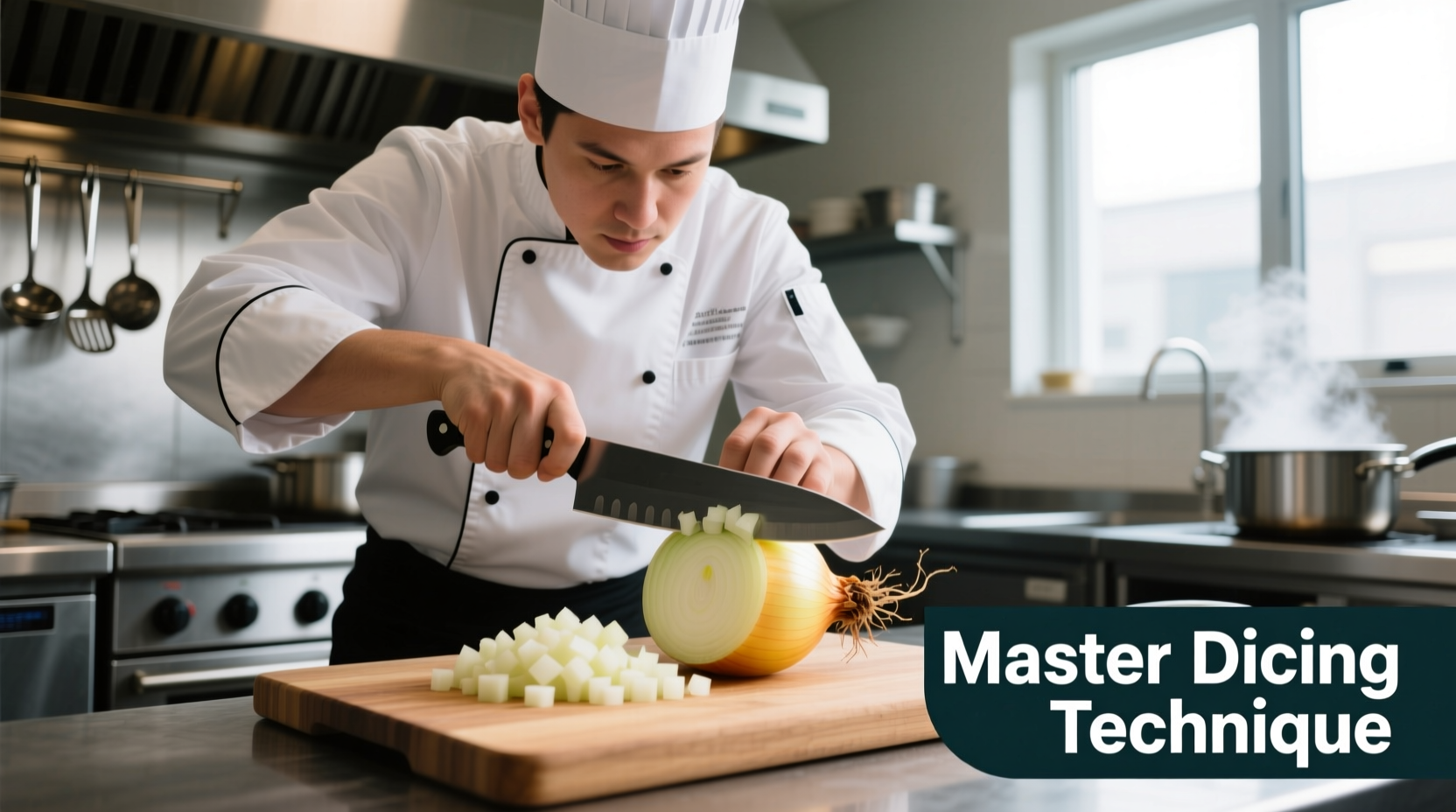Chopping onions efficiently is a fundamental kitchen skill that transforms cooking from stressful to seamless. Whether you're preparing a quick weeknight dinner or crafting an elaborate meal, knowing how to chop onion properly saves time, reduces waste, and enhances your culinary results. This guide reveals the exact methods professional chefs use to achieve consistent cuts while keeping tears to a minimum.
Essential Tools for Perfect Onion Chopping
Before you begin, gather these three critical tools:
- A sharp 8-inch chef's knife (dull knives crush cells, releasing more tear-inducing compounds)
- A stable cutting board (wood or soft plastic prevents slipping)
- A damp kitchen towel for quick hand wipes
According to the American Culinary Federation, using a properly sharpened knife reduces onion-induced tears by up to 60% compared to dull blades. The sharper the knife, the cleaner the cut through onion cells, minimizing the release of syn-propanethial-S-oxide—the chemical compound responsible for eye irritation.
Step-by-Step Onion Chopping Technique
Preparation: Setting Up for Success
- Chill your onion in the refrigerator for 30 minutes before cutting (cold temperatures slow enzyme reactions)
- Remove both ends of the onion, then peel away the outer skin
- Place the onion root-end down on your cutting board
Basic Dicing Method
- Cut vertically through the center, keeping the root intact (this holds layers together)
- Make horizontal cuts from the top toward the root, without cutting through
- Turn the onion 90 degrees and slice downward for perfect dice
- Repeat with the second half
| Onion Type | Best Cutting Technique | Common Culinary Uses |
|---|---|---|
| Yellow Onions | Medium dice | Sautéing, soups, stews |
| White Onions | Thin slices | Salsas, salads, Mexican cuisine |
| Red Onions | Julienne cuts | Garnishes, salads, pickling |
| Shallots | Micro dice | Vinaigrettes, sauces, delicate dishes |
This comparison of different onion varieties and their ideal chopping methods comes from USDA Agricultural Research Service data on allium preparation techniques. Understanding these distinctions ensures you're using the proper onion chopping technique for each culinary application.

Advanced Cutting Techniques
Once you've mastered basic dicing, expand your skills with these professional methods:
Julienne Cut (Matchstick)
After halving the onion, make thin parallel slices lengthwise without cutting through the root. Rotate 90 degrees and slice downward for uniform matchsticks—perfect for stir-fries and garnishes.
Minced Onion
After dicing, gather onion pieces and rock your knife blade repeatedly while moving across the pile. This creates ultra-fine pieces ideal for sauces and dressings where you want flavor without texture.
Science-Backed Tear Reduction Methods
Understanding why onions make you cry helps prevent it. When cells are ruptured, the enzyme alliinase converts sulfoxides to sulfenic acid, which then becomes syn-propanethial-S-oxide—the volatile gas that irritates eyes.
Effective tear prevention strategies include:
- Cutting under a gentle stream of water (dissolves the gas before it reaches eyes)
- Using a fan to blow vapors away from your face
- Chilling onions before cutting (slows chemical reactions)
- Wearing swim goggles (creates a physical barrier)
Research from the University of California, Davis confirms that chilling onions reduces tear production by 40-50% compared to room temperature onions. The cold temperature slows the enzymatic reaction that creates the irritating gas.
Common Onion Chopping Mistakes
Avoid these frequent errors that compromise both safety and results:
- Using a dull knife—increases cell damage and tear production
- Cutting the root end first—causes layers to separate prematurely
- Improper hand positioning—creates safety hazards and uneven cuts
- Rushing the process—leads to inconsistent pieces that cook unevenly
Proper Storage of Chopped Onions
Store freshly chopped onions properly to maintain quality and safety:
- Place in airtight container within 2 hours of chopping
- Refrigerate at 40°F (4°C) or below
- Use within 7-10 days for best quality
- Label container with preparation date
According to FDA food safety guidelines, properly stored chopped onions remain safe for consumption for up to 10 days. However, flavor intensity diminishes after day 5, so use them sooner for optimal culinary results when following any how to chop onion recipe.
Putting It All Together: Your Perfect Onion Chopping Routine
For the most efficient workflow, follow this sequence:
- Chill onions 30 minutes before preparation
- Gather sharp knife, stable cutting board, and damp towel
- Remove ends and peel outer skin
- Cut in half root-to-stem, keeping root intact
- Make horizontal cuts without severing root
- Turn 90 degrees and slice downward for uniform pieces
- Store unused portions immediately in airtight container
This professional onion chopping method ensures consistent results whether you're preparing a simple salad or complex sauce. Mastering these techniques transforms a potentially frustrating task into a quick, efficient kitchen skill that elevates all your cooking.











 浙公网安备
33010002000092号
浙公网安备
33010002000092号 浙B2-20120091-4
浙B2-20120091-4